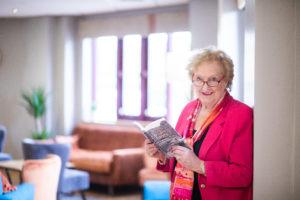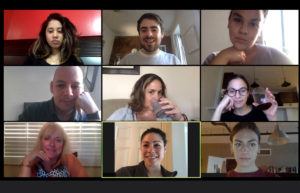COVID and Comms
Occupational Health – COVID and Comms
The COVID-19 crisis is far from over. During the lockdown, businesses across the globe have been severely impacted. Unfortunately for many, their doors remain shut.
In the UK, as of August 2nd 2020, approximately 9.6 million jobs from 1.2 million different employers were furloughed as part of the government’s job retention scheme (source: Statistica). Millions are still working more flexibly or from home, that’s if they’re lucky to be working at all. This month it was announced that the UK is officially in recession, with The Office for National Statistics (ONS) announcing the UK economy fell by a staggering 20.4 per cent between April and June.
Returning to Work
The reality is that most businesses will not be able to pick up where they left off pre-COVID. Businesses are now working out how to best get their people back to work, whilst being flexible and adaptable to the new and evolving environment.
Employers need to take into consideration their employees’ health, not only physical but also mental health, which may affect their ability to return to work and to perform.
“At the heart of the return to work is controlling the risk posed by the virus. Ensuring safe working practices are in place will help deliver a safe return to work and support businesses across the country.”
Sarah Albon, Chief Executive at The Health and Safety Executive – May 2020
In a world of uncertainty, people require both health and wellbeing support and guidance from their employer. There are government guidelines that need adhering to which include…
- Carrying out a risk assessment in conjunction with employees and/or trade unions
- 2 – 1 metres social distancing where possible
- Wearing appropriate PPE
- Reinforced cleaning processes
- You must not reopen if your business is closed under current government rules
There are also guides the government has released that will help many organisations in their return to work needs. However, the devil is in the detail and an employer has to navigate through the nuances of their organisation and unique needs of their people to be effective.
Remember that you must adhere to government guidance. COVID-19 risk assessments are a legal requirement to help your people get back to work, it is not just a ‘tick box’ exercise. I’ve recently written a blog on Managing Risk at Work – Risk Assessment and Risk Management which should help support you with this challenge.
Your people need practical guidance on how to get back to work safely, whether working from home or back in the office, and they look to you to provide this. Any uncertainty in your messaging will result in concerned staff, which may in turn slow the process of getting your business and people back to work.
Good communication is key to getting people back to, and remaining at work, safely. Never has communication in the workplace been more important than it is today. Clarity is key. You may feel you have communicated clearly, but your team may feel otherwise, so it is important to discuss and check their understanding.

Top Tips on Communication
Here are some top tips to help with your communication skills…
- Define your message clearly – and be honest: You’ll gain people’s trust if you use clear and straight forward language and are upfront about any organisational changes rather than trying to hide change. With zoom/team meetings now commonplace, I often suggest that leaders write the key messages down and share them on a powerpoint slide – as visual cues will strengthen your messaging.
- Share your business health where you can: With such a huge amount of uncertainty people will appreciate being kept in the loop on what is happening in the business and their roles, even if you do not have all the answers yet.
- Keep everyone involved: Employees need to be heard and want to feel involved. Involvement is particularly important when it comes to carrying out a COVID-19 Risk Assessment, where you should involve your people to create a comprehensive and structured assessment – leading to change that people buy into.
- Listen, don’t tell: Allow people to ask questions and really listen to their answers. Good listeners form better relationships, and better relationships create a happier and more productive workplace.
- Types of communication: Remember there are four different types of communication, verbal, non-verbal, written, and visual. You can use all of these to get your messaging and communication right. Non-verbal is particularly hard when we are working from home so, when you can, try to break the ice with a smile and a welcome before getting straight to business.
Remote Working Communication
Remote working comes with it’s own set of challenges when it comes to communication, but there are many tools that can help.
- Video conversations such as zoom and teams allow us that face to face contact whilst staying remote from each other.
- Email is a great way to follow up from meetings, track conversations and ensure you have documented important messages, but don’t rely on it all the time as it can become difficult to capture peoples thoughts and feelings, which is where video conversations are stronger.
- Messaging platforms and such as slack or sametime allow for more informal chats. This is a great tool to use for a Risk Assessment, as you can get your whole team involved and it is a less formal place to chat and raise questions that can be resolved as a group.
- Phone calls either direct or as a group are great for that personal touch. Emails can often become impersonal and people can start to feel alienated if there is no other form of communication, so a quick phone call is often a better way to clear miscommunication or chat over an idea rather than sending an email.
My soon to be launched book has a real story in it outlining the importance of being heard. I thought you might like to have a sneak preview of it…
Feeling Valued Pays Off
Several employees in a small department complained of a range of ergonomic problems at work: “the chair is uncomfortable”; “the desk is too low’.
Odd days off sick followed with several members of the team.
Only after Occupational Health had seen the employees to discuss their health symptoms and made ergonomic adjustments to their workstations did they find that the employees were still unhappy.
A common theme emerged: the employees did not feel valued by their manager who didn’t communicate with them: the manager was always more concerned about the time they spent chatting to each other when at work. When this observation and others were expressed to the manager, he immediately realised that he only told the team what to do, and did not listen to their comments or concerns. He started to communicate with his team and held weekly meetings with them as well as one-to-one communications with each member of the team.
The results were amazing, with employees feeling valued and listened to. The unnecessary chatting stopped, which in turn helped create a happier place to work with healthy, engaged and more productive employees working in a healthier and more profitable department.

We are all in this Together
Remember, “we are all in this together”.
People will be concerned about their health and how best to get back to work and stay working safely, regardless of their status in the organisation. We are all in this together. Communication will help us navigate through this uncertainty and come out the other end a stronger, happier, and more productive team leading to a healthier and more profitable business.
Please get in touch if I can help you or your team…
Doreen Miller
Tel: +44 (0)333 900 9280
Email: [email protected]



